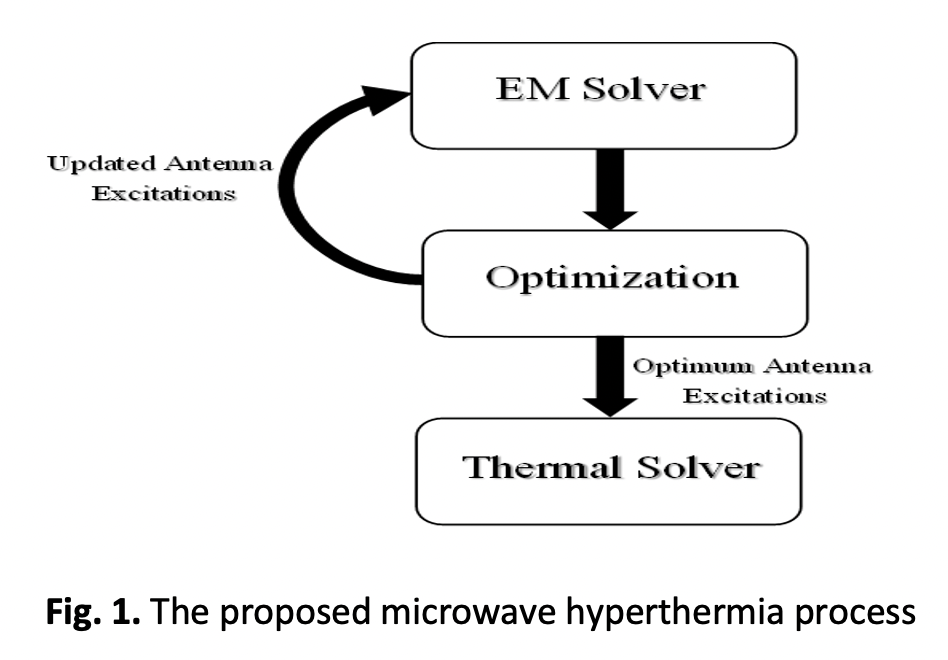Optimization of Antenna Excitations for Non-Invasive Microwave Hyperthermia for Breast Cancer Treatment
DOI:
https://doi.org/10.37934/araset.39.2.258269Keywords:
Breast cancer, Microwave hyperthermia, Antenna array, PSO, GA, GUIAbstract
This research demonstrates an effective focused microwave hyperthermia for non-invasive breast cancer treatment at early stages where the tumour size is small and has not spread to nearby tissues. First, a three-dimensional (3-D) Micro-Strip Patch (MSP) antenna array consisting of four elements and operating at 2.45GHz is used. Second, two evolutionary optimization techniques, particle swarm optimization (PSO) and genetic algorithm (GA), are compared in terms of optimization speed in order to select the algorithm which will be used in this study to calculate the ideal phase and amplitude excitations for each MSPA. The fitness function of the used algorithm aims to increase the specific absorption rate (SAR) and power density (Q) at the tumour site while keeping these values at minimum levels in healthy positions. The focusing technique is used to collect a data of accurate antenna excitations of a tumour having a radius of 2.5 mm (less than 1 cm3 volume), embedded in every possible position in the glandular tissues in the antenna array's central plane. Using MRI results from a real patient (age 40) in the prone position, a realistic breast model was produced. In order to demonstrate the efficiency of the suggested 3D microwave focusing technology, the temperature distribution at the tumour centre position was measured and compared with other healthy locations. The data gathered are then used to create a non-invasive hyperthermia GUI system for the treatment of breast cancer.Downloads
Download data is not yet available.

Downloads
Published
2024-02-13
Issue
Section
Articles



























